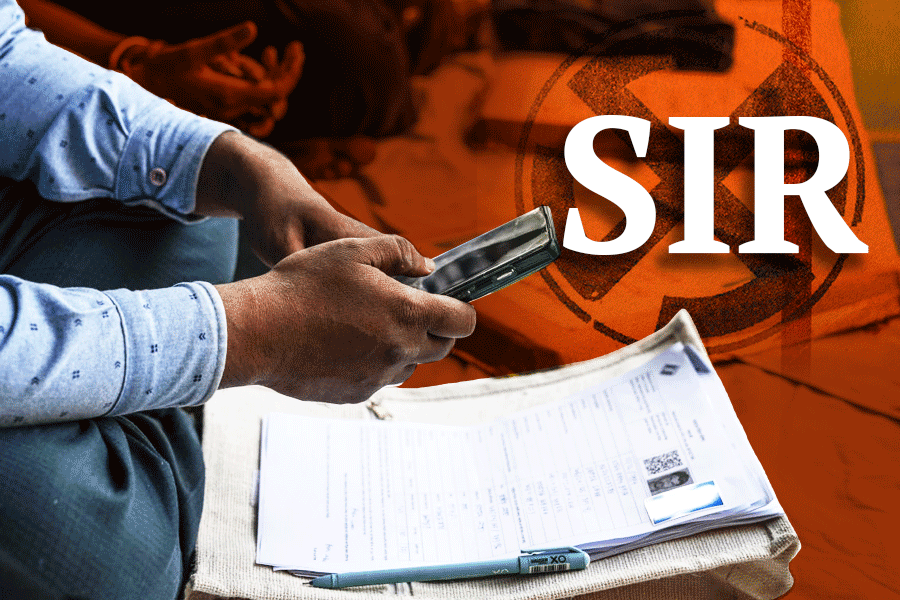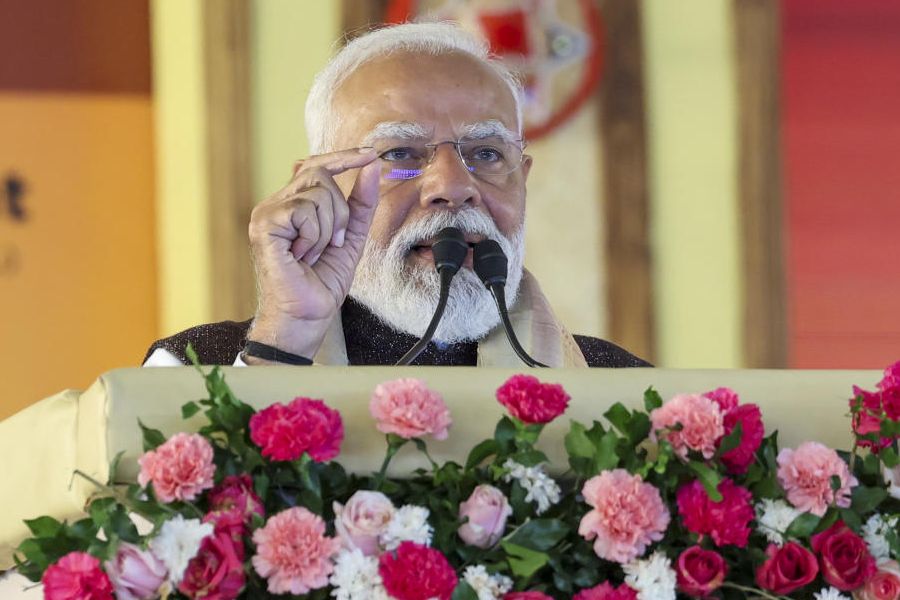 |
 |
 |
 |
 |
 |
 |
| (From top): a teenager listens to music on the Apple iPod; a woman relaxes with her mobile radio; the brightly-coloured Apple iPod Minis; a Nokia mobile radio handset; youngsters check out the latest tunes at the WorldSpace lounge; a music-lover downloads tracks from the Internet |
Why has financial analyst Anees Ahmed put his CD player into cold storage? The answer: He has just bought a top-of-the-line personal computer and fitted it with the best speakers that money can buy. His new PC can store around 6,000 songs ? everything from Pink Floyd to his favourite Bade Ghulam Ali Khan ghazals.
Akanksha Gill, a 24-year-old call centre executive, has taken a different route to musical nirvana. She has bought the most talked-about gadget of the year ? the 6 GB Apple iPod Mini. Now she doesn?t have to cart around CDs and cassettes everywhere she goes. There are 5,000 tunes all within arm?s reach at any time of the day.
It?s official. The two-in-one is dead. And so is its successor ? the three-in-one. The tech revolution has overhauled the way we ? at least the younger generation ? listen to music. The revolution is on two fronts. At one level, PCs with speakers can do almost anything that a two-in-one once did. At another level, it?s possible to download almost unlimited amounts of music from the Internet.
Says 23-year-old Ayon Ganguly, a final year MBA student, ?I don?t remember the last time I bought a CD or cassette. All my music is digital, and I either swap music from friends whose collections are as large as mine or download from peer-to-peer networks.? His favourite sources of music are networks like KazaaLite (http://www.kazaalite.tk), Overnet (http://www.overnet.com) and Music Club (http:// mclub.te.net.ua/soft.phtml).
The new musical world may be a bit confusing for older folk who?ve barely figured out whether to switch from cassettes to compact discs. But, tough as it may seem, they?ll have to get used to the new technologies out there. After all, Wired magazine reckons the technology behind music is changing at the speed of sound. That includes both the dizzying array of gizmos that have replaced the two-in-one and the software that enhances the listening experience.
The new tech options are why more and more homes that own PCs today don?t feel the need to dust off their CD players. The ease with which music can be copied and shared from computer to computer means many don?t even feel the need to buy music ? or if they do, they only buy it off the Net.
Of course, there are those who quibble about the fact that the quality of sound is inferior compared to that produced by a really high-end music system with speakers from top brands such as Bose, Denon and Nakamichi. But these speakers could cost anywhere up to Rs 5 lakh for a set and cater to a totally different ultra-sophisticated listening market.
All you need to play music on the computer is an MP3 player and music manager software ? and while earlier, the choice was limited to good old Winamp, now you have scores to choose from, such as Real Player, Jet Audio, Music Match, Windows Media Player, Apple iTunes, MSN Music and Yahoo! Music Engine.
Most of these let you sort your entire collection of songs into various mood and genre-based playlists, manage these for you, add sound effects such as bass and woofer, burn songs into CDs, convert songs from one file format (such as mp3, the most common music file format) to others (such as WMA, WAV, OGG) and of course, play the songs for you.
If you are the kind that can?t be bothered with all this newfangled stuff but would like the latest music playing on your comp, despair not. Just tune in to the thousands of Internet radio stations and choose from a wide array of specialised stations ? from reggae and jazz to Indian and Western Classical. Internet radio is a broadcasting service transmitted via the Internet through a process called streaming and not every Internet ?radio station? has a corresponding traditional radio station. Some of the popular Internet radio stations are Live 365, SHOUTcast and Yahoo!Launchcast Radio.
Popular Indian counterparts of this are Internet music channels such as Raaga.com and indianmusiconline.com. Though these don?t stream music in the form of continuous radio broadcasts, they let you connect to their server which houses a veritable treasure trove of old and new film songs in a number of Indian languages. Raaga.com, has, of late, even started putting up the latest non-film albums.
Where radio and non-radio music channels lose out is in not allowing downloads. Some would say that the heydays of peer-to-peer music sharing are finished with all that trouble over Napster, but in fact, P2P has come a long way since the days of Napster and Audiogalaxy. ?Despite the efforts of entities like the RIAA and MPAA to stem the river of information shared freely online, new services have come up ? bigger, better, and more immune. It looks like the technology is here to stay, as a tool for sharing all kinds of media,? says Sriram Sharma, a technology consultant with leading Indian tech website techtree.com Peer-to-peer file sharing can be described as a common pool of resources in which all the members of the group that share these resources lend as well as borrow. Say you want a particular cover version of Knock Knock Knockin? on Heaven?s Door ? you type the name into the search box of the p2p software console and within minutes you are connected to five other users who have this song. The download begins, sometimes from a single user and sometimes in bits from all five users, and within seconds or minutes, depending upon the speed of your Internet connection, you have added a brand-new song to your collection.
Of course, this can be done perfectly legitimately as well. Sites such as Yahoo Music, iTunes Music Store, Rhapsody and Napster (the erstwhile Big Daddy of illegal peer-to-peer sharing that has gone respectable) have millions of songs that you can download for a price. Which are not prohibitive by any stretch of the imagination, most charging monthly or annual subscriptions that hover between $5 and $10 a month (you can pay by credit card) for unlimited downloads.
But, your PC is not the only gadget that?s playing music for you these days. What about that trusted companion of the modern age, the mobile phone? Although mobile phones that play music are yet to catch on the way mobile phones that click photos had some time back (maybe because the scandal-creating possibilities of the musical variety are limited), it?s not uncommon to see people listening to FM radio on their mobiles with the help of hands-free accessories. This facility is now available in a number of entry level mobiles, too, so you don?t need a really high-tech mobile to listen to music.
Meanwhile, a number of handset manufacturers are trying to give Apple?s iPod competition in the form of mobile phones that can double up as digital music players. Using memory stick cards, users can store a large number of songs downloaded directly from the Internet to their phones (such as the Sony W800 or the Motorola E680i, the E725 and the E685).
But what about the gadget that brought music into our lives in the days of turntables and scratchy disks? We are talking about the radio, of course.
While FM stations have made radio younger and peppier, satellite technology has added to it a techno edge with more choice and variety than ever. WorldSpace, the only company that offers satellite radio in India, is ready with a sleeker, more affordable package and 40 stations, some of them exclusive Indian ones with regional music content such as Radio Tara (Bengali), Tunak (Punjabi), Spandana (Telegu) and Sparsha (Kannada). For world music aficionados, there is Maestro (Western Classical music), Riff (Jazz) and Up Country (Folk and country music).
All this in crystal-clear digital sound and for a yearly subscription of Rs 1,200, plus the cost of the receiver you would buy, which costs anywhere between Rs 2,790 and Rs 11,690, depending upon the model you choose. According to Deepak Varma, MD, WorldSpace, the time is just ripe to make Indians addicted to satellite radio. ?Attitudes towards music are changing, and people are ready to experiment,? says Varma. Though WorldSpace has been around in India for almost five years, the company has just re-launched itself with more channels, an aggressive marketing and advertising campaign and a considerably more affordable package. WorldSpace is also working on its car radio system, which it has already provided to its US customers and which should ensure it greater popularity in India, feels Varma.
It?s perhaps ironic that these astounding innovations in music technology are happening in an age that has hardly seen any innovation in music itself, an age that that has failed to produce any artiste with the lasting power of, say, The Beatles or Bob Dylan. If only the Britneys and Beyonces of the world could also keep pace!
Photographs by Subhendu Chaki and Rupinder Sharma
Model: Sonika Singh (in the iPod photograph)
Listen up!
Care to try a little DJ-ing at home? The various music morphing software available today let you play DJ by tweaking and playing around with songs. Most of these such as the popular AV Music Morpher are freeware — that is, they can be downloaded for free from the Internet — and they allow you to add beats, change singer voice and tempo, add sound effects and mix multiple tracks. Some come with voice extractors and voice removers that let you do fantastic stuff such as splitting the singer’s voice from the music and convert a solo song into a duet with the help of audio manipulating tools to copy, cut, paste sample segments and mix multiple tracks.
What’s more, you can even design your own CD covers and create inlays and labels with the CD cover editor that comes with most of this kind of software. Then there’s this little tool called MoodAmp, which lets you rate songs by mood while listening, and then generates playlists to suit your mood. Tired of the same old boring ringtones for your cellphone? You can even create your own ringtones from your favourite songs using music morpher software. And you don’t need to be a techno whiz to be able to do all this, since there are animated tutorials on the Internet that lead you through these processes step by step.
Who needs a karaoke bar anymore? Or even a DJ, for that matter?











